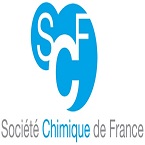Theme:
pharmaceutica-2023
Pharmaceutica-2023 Vancouver, Canada Conference invites everyone operating within the field of materials to attend “2nd International Conference and Expo on Pharmaceutics & Novel Drug Delivery Systems” which is going to be held during March 20-21, 2023 in Vancouver, Canada. We are welcoming all the Speakers and Delegates from every corner of the World to join us at Pharmaceutics & Novel Drug Delivery Systems (Pharmaceutica-2023). Pharmaceutica-2023 is going to offer scientific talks by Keynote Speakers, Oral talks, Symposiums, Poster Presentation, Exhibitions and many more.
Pharmaceutica-2023 will offer an International platform where Scholars and experts belonging to the Pharmaceutical background and working in that field can showcase their scientific work, research based on the following topics such as Pharmaceutics, Pharmacy, Drug delivery, Drug targeting and many more. Industries related to Pharmaceutical and Drug manufactures are all invited to showcase their advanced product so that their products can get exposure.
Track 1:Blockchain-Pharmaceutical Advancements
Block chains can be used to trace the origin of pharmaceuticals, the transport of drugs, and the procurement of raw materials. Block chain technology also reduces the number of intermediaries involved in the pharmaceutical process, thereby reducing costs and improving safety.
Block chain can enable companies throughout the prescription drug supply chain to verify the authenticity of medicines, expiry dates and other important information. Proponents of Block chain technology say we're on the cusp of a revolution in health care. They envision a future where doctors and institutions share medical records easily, and patients control their personal data rather than letting tech companies harvest our data for free and sell it for profit
Track 2: Digital Therapeutics-Curative Therapies
Digital therapeutics is a part of digital health that delivers therapeutic interventions directly to patients via evidence-based, clinically-evaluated software for disease management. Digital therapy products vary from standalone apps to complex solutions that include patient-facing software and connected medical devices. Doctor-facing app contains: List of patients with diabetes and their recent vitals (blood glucose, insulin intake, HbA1C). Notifications on abnormal health parameters. Two practical examples of digital therapy available in the market are reSET-O and Sleepio. reSET-O has various applications that lead patients with stimulant use disorders to track their substance use, cravings, and triggers.
Track 3: Molecular Dynamics Simulations
Molecular Dynamics can be defined as a computer simulation technique that permits the prediction of time evolution of an interacting particular system involving the generation of atomic trajectories of a system using numerical integration of Newton’s equation of motion for a specific interatomic potential defined by an initial condition and boundary condition.
Particularly important application of MD simulation is to determine how a biomolecular system will respond to some perturbation. In each of these cases, one should generally perform several simulations of both the perturbed and unperturbed systems in order to identify consistent differences in the results. MD simulations are used to describe the atomic and molecular properties of protein, drug-target interactions, solvation of compounds, and conformational changes that a protein or compound may undergo under various conditions. Molecular simulation methods can basically be separated into quantum mechanics (QM) methods, which treat electrons as the fundamental interactive particles of the system, and classical mechanics (CM) methods, which treat individual atoms or groups of atoms as the fundamental interactive particles of the system. Molecular simulation methods can basically be separated into quantum mechanics (QM) methods, which treat electrons as the fundamental interactive particles of the system, and classical mechanics (CM) methods, which treat individual atoms or groups of atoms as the fundamental interactive particles of the system.
Track 4: Novel Developments In Drug Delivery System
Novel Drug delivery System can be referred as approaches, Formulations, Technologies, and systems for transporting a Pharmaceutical compound in the body as needed to safely achieve its desired therapeutic effects. These approaches include drug modification by chemical means, drug entrapment in small vesicles that are injected into the bloodstream, and drug entrapment within pumps or polymeric materials that are placed in desired bodily compartments (for example, the eye or beneath the skin).
In current research, Drug delivery systems has described in four broad categories:
- Routes of delivery,
- Delivery vehicles,
- Cargo
- Targeting strategies.
Track 5: Drug Targeting and Drug Development
Noticing drug targets plays essential roles in designing novel drugs and combating diseases. Unfortunately, our current knowledge about drug targets is far from comprehensive. In the past decade, the collection of various types of study of science related data makes it possible to develop computational approaches to predict drug targets.
- Targeted drug delivery
- DrugBank
- Drug resistance
Track 6: Challenges in Pharmaceutical Research
The Pharmaceutical industry is growing day by day with the introduction of new technologies but still, it is facing hurdles such as skilled professionals, increase in the development cost, protecting the new innovations. The main challenges in preclinical studies are Improper Study design, Cost computability, Timeline, Lack of Knowledge of Pharmacovigilance. Regulatory agencies must focus on the international and national laws and regulations where the preclinical trial is to be performed.
- Medical research
- Clinical pharmaceutical scientist
- Cubist Pharmaceuticals
Track 7: Pharmaceutical Microbiology and Biotechnology
Pharmaceutical Microbiology is the branch of Microbiology, which involves the study of microorganisms associated with the manufacture of pharmaceuticals. e.g. controlling the number of microorganisms in a process environment, excluding microorganisms and microbial by-products like exotoxin and endotoxin from water and other starting materials, and ensures the sterile finished pharmaceutical product. Microbiology contains numerous sub-divisions which include:
- Virology
- Bacteriology
- Protistology
- Mycology
- Immunology
- Parasitology
Track 8: Drug Discovery and Screening
Testing large numbers of compounds to see if they produce an appropriate biochemical or cellular effect is usually one of the first steps in the drug-discovery pathway, and ways of making this screening faster, more effective and less expensive are in continual development. Designing a drug based on the targeted molecule and testing it for further modification, the testing of drugs is usually done by high-throughput screening (HTS).
- Phenotypic screening
- Virtual screening
- High-throughput screening
Track 9: Pharmaceutical Analysis and Quality Assurance
Pharmaceutical analysis is a process that is used for detection, determination, separation, purification, and structure elucidation of a given compound that is used in the formulation of Pharmaceutical substances. It is also called Analytical chemistry that deals with the drugs both as bulk drug substances and as pharmaceutical formulations. Product analysis deals with the various formulations used for Toxicological studies, Clinical studies, and marketing.
Based on the determination, pharmaceutical analytical methods are of two types. They are:
- Quantitative analysis
- Qualitative analysis
Quality assurance is defined as a planned and systematic activity that is implemented within the quality system which can be demonstrated to provide confidence that a product or a service will fulfil the quality requirements. It is a system for evaluating performance, service, or the quality of a product against the system, standard or specified requirement for customers.
Track 10: Biomaterials in Drug Delivery
Biomaterials have enhanced oral and injectable drug delivery, the most common modes of drug administration, while also creating new avenues for Drug Delivery including via pulmonary, Transdermal, ocular, and Nasal routes The application of Biomaterials in the drug delivery system has overcome the limitation we were facing in delivering drugs. It has increased the Bioavailability at the site, reducing the side effect of drugs.
- Colloidal gold
- Hydrogel
- Osmotic-controlled release oral delivery system
Track 11: Drug Design and Development
Drug design is the inventive process of finding new medications based on the knowledge of a biological target. In the most basic sense, drug design involves the design of molecules that are complementary in shape and charge to the molecular target with which they interact and bind. Drug design is the process of discovering and designing new drugs, medication based on the knowledge of the targeted molecule. The drug acts as an activator/inhibitor on the biological molecule such as protein and hence in turn results in a therapeutic benefit to the affected person.
- New Drug Application
- Investigational New Drug
- Drug nomenclature
Track 12: Biotherapy and Radiopharmaceuticals
Biotherapy is also termed as Biological Therapy or Immunotherapy. It is a type of treatment that uses the substances made from living organisms such as a virus, gene, or a protein to treat a disease. Those substances may occur naturally in the body or may be made in the laboratory. Common biological agents used are:
- Tumor necrosis factor (TNF) inhibitors
- B-cell inhibitors
- Interleukins (IL) inhibitors
- Selective co-stimulation modulators
Radiopharmaceuticals are also known as medicinal radio compounds are unique medicinal formulations that contain radioisotopes. Radioisotopes are bound to biological molecules able to target specific organs, tissues, or cells within the human body. The radioactive drugs can be used in the diagnosis and, for the therapy of diseases. Radiopharmaceuticals emit radiation themselves, which is different from contrast media which alter or absorb external electromagnetism or ultrasound. Radio pharmacology is the branch of pharmacology that specializes in these agents.
Radiopharmaceuticals can be divided into four categories:
- Radiopharmaceutical preparation
- Radionuclide generator
- Radiopharmaceutical precursor
- Kit for radiopharmaceutical preparation
Track 13: Pharmaceutical Nanotechnology
Pharmaceutical Nanotechnology is the exciting, rapidly emerging branch of medical science that deals with harnessing nanoscale materials as Drug Delivery and/or diagnostic tools. As Drug Delivery Tools, Nano-Delivery systems can be used to enhance the site-specific, targeted delivery of precise medicines. Nanomedicine provides clinically useful devices and research tools to the Pharmaceutical Industry. It initiates an advanced commercial application in the Pharmaceutical industry which includes Drug Delivery System, in vivo imaging and many more.
- Impact of nanotechnology
- Nanorobotics
- Virus nanotechnology
Track 14: Phenotypic Drug Discovery
Phenotypic screening is a strategy used in drug discovery to identify molecules with the ability to alter a cell's phenotype. Animal models and cell-based assays are both strategies used to identify these molecules. It’s the process of designing of drug that will target the small molecules such as Peptides, RNA, protein molecules, which results in the alteration of the phenotype of a cell or an organism in the desired manner.
- Reverse pharmacology
- Phenotypic screening
- Pharmacognosy
Track 15: Drug Delivery Technologies
Drug delivery systems (DDSs) are developed to deliver the required amount of drugs effectively to appropriate target sites and to maintain the desired drug levels. Research in newer DDS is being carried out in liposomes, Nanoparticles, Niosomes, Transdermal Drug Delivery, Implants, Microencapsulation, and Polymers. Advanced drug delivery technologies enhance the absorption rate of drug, efficacy and the experience of patients towards the drug.
- Thin-film drug delivery
- Nanoparticle drug delivery
- Microneedle drug delivery
Track 16: Pharmacogenetics
It’s the study of how human bodies react differently against drugs and drug therapies, these changes are determined by the human genetic makeup or genes. This study helps drug manufacturers and providers to choose the right amount of dose for each individual patient, which is likely to work best on that patient’s body.
- Polypharmacy
- Drug labelling
- Pharmacovigilance
Track 17: Pharmaceutical Research & Development
Pharmaceutical Research is also called as pharmacy research. It includes within the wider area of health services research, which focuses on examining how and why people access pharmacy services, how much care costs, and what happens to patients as a result of this care.
- Industrial and Physical Pharmacy
- Pharmaceutical Chemistry
- Advances in Pharmacological Research
- Pharmaceutical Organic Chemistry
Drug development is the process of developing a new Pharmaceutical drug to the market once a lead compound has been identified through the process of drug discovery. It usually includes Preclinical research on microorganisms and animals, filing for regulatory status, as per the US Food and Drug Administration, for an investigational new drug to initiate clinical trials on humans, and it may include the step of obtaining regulatory approval with a new drug application to market the drug.
Track 18: Pharmaceutical Formulations
Pre-Formulation and Formulation aspects which is the process in which different chemical substances i.e., active chemical substances will combine together to produce a medical compound i.e., medical drug. Pharmaceutical Formulations include Ophthalmic Formulation, Paediatric Formulation Development, Topical Formulation and Medication Formulation.
- Pharmaceutics
- Galenic formulation
- Dosage form
Track 19: Biodrugs, Biomolecules and Therapeutics
Bio-drugs are also referred as biomedicine, Western medicine, mainstream medicine, or conventional medicine. It is a branch of medical science that applies biological and physiological principles to clinical practice. Bio-drugs are based on standardized, evidence-based treatment validated through biological research, with the treatment administered through formally trained doctors, Nurses, and other such licensed practitioners.
It includes many other biomedical disciplines and areas of specialty that contain the "bio" prefix such as molecular Biology, Biotechnology, Biochemistry, Embryology, Cell Biology, Nanobiotechnology, Biological Engineering, laboratory Medical Biology, genetics, Cytogenetics, Gene Therapy, Systems Biology, Bioinformatics, Biostatistics, Microbiology, Anatomy, Toxicology, Neuroscience, Parasitology, Virology, Immunology, Pathology, Physiology, and many that usually concern with life sciences as applied to medicine. A Biomolecule is also known as a Biological molecule. It is a used term for molecules present in organisms that are essential to one or more typically Biological processes, such as Cell division, Morphogenesis, or development.
The four major types of biomolecules are Carbohydrates, Lipids, Nucleic acids, and Proteins.
In other terms, Biotherapeutics are also called Biologicals. Bio therapeutics are drug therapy products, where the active ingredient is extracted from a Biological source. These products include recombinant proteins and Hormones, Growth factors, Monoclonal Antibodies Cytokines, Gene Therapy products, Gene-silencing/editing Therapies, Vaccines, cell-based products, tissue-engineered products, and stem cell therapies.
Track 20: Drug Regulatory Affairs
Regulatory Affairs is involved in the development of new medicinal products from early on, by integrating regulatory principles and by preparing and submitting the relevant regulatory dossiers to health authorities. Regulatory Affairs is involved in every step of the development of a Novel medicine and in the post-marketing activities with medicinal products.
- Regulatory science
- Dosage form
- Thin-film drug delivery
Track 21: Precision Medicine
Medical treatments often react differently on each patients, in this case personalized medicine helps to predict the possible reaction a patient’s body might have after the administration of drug, and customized medical treatment is provided to the patient. This method is a breakthrough treatment process but it studies the patients’ unique molecular reaction to a certain disease.
- Molecular medicine
- Evidence-based medicine
- Precision Medicine Initiative
Pharmaceutica 2023 Market is expected to reach $16.92 Billion by 2029 from $11.81 Billion in 2021 at a CAGR of 4.6 %. Pharmaceutics is a field of medicine that deals with the Drug Delivery System, Drug Design, and Drug Screening. Region/country wise Pharmaceutics & Novel Drug Delivery system market report is available at Pharmaceutica 2023.
The Pharmaceutical industry has an important role in designing and developing drugs, Vaccines. It plays a significant role to treat diseases and more importantly to improve the quality of life. The medical technology industry is an eminent part of the healthcare sector. It includes, most of all, medical devices which simplify the prevention, diagnosis and treatment of diseases and illnesses. The most well-known medical technology products are, Among others, Pacemakers, Imaging instruments, Dialysis machines and Implants.
Pharmacy Council stated that more than 275 new chemical production projects had been announced since 2010 with a total value of more than $170 billion, with a full 49% already complete or under construction; 61% of these are the foreign direct investment. By 2021, U.S. capital spending by the chemical industry will reach $65 billion more than triple the level of spending at the start of this prolonged cycle in 2010. The trade surplus in chemicals will grow to $36 billion this year as exports rise by 2% to $132 billion and imports hold steady at $96 billion.
Growth of Pharmaceutical Industry in China:
The Pharmaceutical industry is one of the leading industries in the People's Republic of China, covering synthetic chemicals and drugs, prepared Chinese medicines, Medical devices, Hygiene materials, and Pharmaceutical machinery. China, as of 2007, has around 3,000 to 6,000 domestic Pharmaceutical manufacturers and around 14,000 domestic Pharmaceutical distributors. The most often-cited adverse factors in the marketplace include a lack of protection of intellectual property rights, a lack of visibility for drug approval procedures, a lack of effective governmental oversight, poor corporate support for drug research, and differences in the treatment in China that are accorded to local and foreign firms. Nevertheless, China is reportedly expected to become the third-largest Pharmaceuticals market in the world by 2011.
Top Pharmaceutical association in the world:
- International Pharmaceutical Federation (FIP)
- International Pharmaceutical Students' Federation (IPSF)
- American Association of Colleges of Pharmacy (AACP)
- American Pharmacists Association (APhA)
- American Society for Pharmacy Law
- American Society of Consultant Pharmacists (ASCP)
- American Society of Health-System Pharmacists (ASHP)
- Professional Compounding Centers of America
- American College of Clinical Pharmacy (ACCP)
- College of Psychiatric and Neurologic Pharmacists (CPNP)
- European Association of Employed Community Pharmacists in Europe (EPhEU)
- Pharmaceutical Group of the European Union (PGEU)
- Australian College of Pharmacy
- Pharmaceutical Society of Australia
- The Pharmacy Guild of Australia
- The Society of Hospital Pharmacists of Australia
Pharmaceutics & Drug Delivery Market Research:
Pharmaceutica 2023 Industry Research Report is a professional and in-depth study on the current state of the Global Pharmaceutical industry. This report studies of Pharmaceutics in Global market, especially in North America, China, Europe, Southeast Asia, Japan and India with production, revenue, consumption, import and export in these regions, from 2014 to 2022, and forecast to 2025.
The Pharmaceutica 2023 research provides a basic overview of the industry including definitions, classifications, applications and industry chain structure. The Pharmaceutics market analysis is provided for the international markets including development trends, competitive landscape analysis, and key regions development status. Development policies and plans are discussed as well as manufacturing processes and cost structures are also analysed. This report also states import/export consumption, supply and demand Figures, cost, price, revenue and gross margins.
The Pharmaceutica 2023 was worth $934.8 billion in 2017 and will reach $1170 billion in 2021, growing at 5.8%, according to a recent Pharmaceutics by The Business Research Company.
This is an accelerated pace compared to 5.2% for the years before 2017 but is slower than the other two large healthcare segments, medical equipment and healthcare services. Healthcare as a whole is growing at over 7% year on year.
The report also focuses on global major leading industry players of Pharmaceutics market providing information such as company profiles, product picture and specification, capacity, production, price, cost, revenue and contact information. Upstream raw materials and equipment and downstream Demand Analysis is also carried out. The Pharmaceutics market development trends and marketing channels are analysed. Finally, the feasibility of new investment projects is assessed, and overall research conclusions offered.
Novel Drug Delivery Systems Market Report provides a relevant source of perceptive data for investors. Novel Drug Delivery Systems Market Report also examines global Novel Drug Delivery Systems Industry growth analysis, the past and innovative cost, demand and supply information, and revenue.
The global Novel Drug Delivery Systems Market Analysis and researches the Novel Drug Delivery Systems development status and forecast in the United States, EU, Japan, China, India, and Southeast Asia. This report focuses on the top players in the global market.
North America is the largest consumption place, with a consumption market share nearly 49.69% in 2017. Following North America, Europe is the second largest consumption place with the consumption market share of 26.15%.
The Novel Drug Delivery Systems market is valued at 26500 million US$ in 2018 and will reach 31100 million US$ by the end of 2025, growing at a CAGR of 2.0% during 2019-2025. The objectives of this study are to define, segment, and project the size of The Novel Drug Delivery Systems market based on company, product type, end user and key regions.
Key players having presence in the global Nanotechnology Drug Delivery market are AbbVie, Inc., Amgen, Inc., Celgene Corporation, Johnson & Johnson, Merck & Co., Inc., and Novartis International AG, among others.
Pharmaceutica 2023 is the last element of an information continuum, where research concepts are transformed into practical therapeutic tools and where information is progressively layered and made more useful to the health care system. Thus, transfer of information to physicians through marketing is a crucial element of pharmaceutical innovation. By providing an informed choice of carefully characterized agents, marketing assists physicians in matching drug therapy to individual patient needs. Pharmaceutical marketing is presently the most organized and comprehensive information system for updating physicians about the availability, safety, efficacy, hazards, and techniques of using medicines. The costs of pharmaceutical marketing are substantial, but they are typical of high-technology industries that must communicate important and complex information to sophisticated users. These costs are offset by savings resulting from proper use of medicines and from lower drug costs owing to price competition.
Advanced Drug Delivery Systems
• The global Advanced Drug Delivery market should grow from roughly $178.8 billion in 2015 to nearly $227.3 billion by 2020, with a compound annual growth rate (CAGR) of 4.9%. • The North American market should grow from nearly $75.7 billion in 2015 to $93.4 billion by 2020, a CAGR of 4.3%. • The European market should grow from roughly $57.3 billion in 2015 to nearly $72.1 billion by 2020, a CAGR of 4.7%.
• The global systemic Antibiotics market should reach nearly $44.7 billion in 2020 from nearly $40.6 billion in 2015 at a compound annual growth rate (CAGR) of 2.0% from 2015 to 2020.
• The beta-lactams market should reach over $22.0 billion by 2020 from over $20.6 billion in 2015, a CAGR of 1.3% from 2015 to 2020.
• The other antibiotic classes market should reach over $10.6 billion in 2020 from nearly $8.3 billion in 2015, a CAGR of 5.0% from 2015 to 2020.
• The global excipients market should reach nearly $6.9 billion by 2020 from over $6.2 billion in 2015, a compound annual growth rate (CAGR) of 1.9% from 2015 to 2020.
• The organic excipients market should reach $6.3 billion by 2020 from nearly $5.8 billion in 2015, a CAGR of 1.7% from 2015 to 2020.
• The Inorganic excipients market should reach $433.7 million by 2020 from $351.9 million in 2015, a CAGR of 4.3% from 2015 to 2020.
The global ophthalmic therapeutic drug market was valued at $12.3 billion in 2014. This market is expected to reach $19 billion by 2020, with a compound annual growth rate (CAGR) of 9.1% from 2014 to 2020. • The global age-related macular degeneration (AMD) market is expected to grow to nearly $7.9 billion by 2019 from nearly $5.4 billion in 2014, a CAGR of 7.8% from 2014 to 2020. • The global glaucoma therapeutic market generated revenue of $3.8 billion in 2014, and by 2020 this segment is expected to generate $6.4 billion, with a CAGR of 11.1% from 2014 to 2020.
Target Audience:
• Drug Delivery Technology Manufacturers
• Public and Private Physicians
• Healthcare Institutions (Medical Data Centers)
• Research & Clinical Laboratories
• Distributors and Suppliers of Drug Delivery Technologies
• Health Insurance Payers
• Market Research and Consulting Firms
|
Novartis |
Roche |
Johnson & Johnson |
Merck |
|
Sanofi |
Pfizer |
Bayer |
Eli lily |
|
Amgen |
AstraZeneca |
AbbVie |
Celgene |
|
GlaxoSmithKline |
Boehringer Ingelheim |
Bristol-Myers Squibb |
Takeda Pharmaceutical |
|
Otsuka |
Novo Nordisk |
Gilead Sciences |
Biogen Idec |
|
Allergen |
Actavis |
Shire |
Mylan |
|
Actelion |
Ipsen |
Novozymes |
Zoetis |
Association & Societies:
- Academy of Managed Care Pharmacy (AMCP)
- Accreditation Council for Pharmacy Education
- Alabama Board of Pharmacy
- American Association of Colleges of Pharmacy (AACP)
- American Association of Pakistani Pharmaceutical Scientists
- American Association of Pharmaceutical Scientists (AAPS)
- American Association of Pharmacy Technicians (AAPT)
- American College of Clinical Pharmacology
- American College of Clinical Pharmacy (ACCP)
- American Institute of the History of Pharmacy
- American Pharmacists Association (APhA)
- American Society for Clinical Pharmacology and Therapeutics
- American Society of Consultant Pharmacists (ASCP)
- American Society of Health-System Pharmacists
- American Society of Pharmacognosy
- Arkansas State Board of Pharmacy
- Association of Pharmacy Technicians UK
- Board of Pharmaceutical Specialties
- World Health Organization (WHO)
- International Pharmaceutical Federation (FIP)
Conference Highlights
- Pharmacogenetics
- Precision Medicine
- Pharmaceutical Formulations
- Drug Targeting and Drug Development
- Drug Design and Development
- Phenotypic Drug Discovery
- Drug Delivery Technologies
- Challenges in Pharmaceutical Research
- Pharmaceutical Nanotechnology
- Drug Discovery and Screening
- Drug Regulatory Affairs
- Biomaterials in Drug Delivery
- Novel Developments In Drug Delivery System
- Pharmaceutical Research & Development
- Pharmaceutical Analysis and Quality Assurance
- Biodrugs, Biomolecules and Therapeutics
- Pharmaceutical Microbiology and Biotechnology
- Biotherapy and Radiopharmaceuticals
- Blockchain-Pharmaceutical Advancements
- Digital Therapeutics-Curative Therapies
- Molecular Dynamics Simulations
To share your views and research, please click here to register for the Conference.
To Collaborate Scientific Professionals around the World
| Conference Date | March 20-21, 2023 | ||
| Sponsors & Exhibitors |
|
||
| Speaker Opportunity Closed | Day 1 | Day 2 | |
| Poster Opportunity Closed | Click Here to View | ||
Useful Links
Special Issues
All accepted abstracts will be published in respective Our International Journals.
Abstracts will be provided with Digital Object Identifier by






















